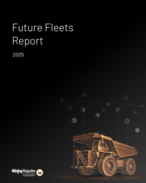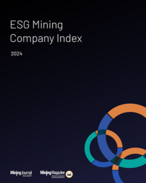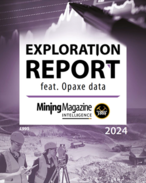This article is 19 years old. Images might not display.
Published in March 2006 Australian Longwall Magazine
Longwall mining at the Xstrata Coal-owned mine, located near the Hunter Valley town of Mudgee, began in 1986 – open-cut mining had been ongoing since 1982.
At a face width of 250m, the mine’s current roof supports were designed for 12,000 cycles but by the time the current panel finishes, it will have completed 49,000 cycles.
The idea to widen the face was originally mooted almost seven years ago, but with the purchase of a new longwall recognised as critical for the mine’s survival, widening the face came under serious scrutiny.
The lease at Ulan contains a large resource base and stable geology, making it conducive to a wider face. This, along with other factors, made widening the face looked economically sound.
On completion of the Eraring power plant contract in 2007, open-cut mining at Ulan is due to end. With no nearby customer to take Ulan’s high ash coal and with the mine located 300km from the Port of Newcastle – making it one of the Hunter’s furthest inland mines – the mine’s future was in question.
Following exhaustive studies, Xstrata Coal concluded the mine’s future lay in containing costs, ramping up productivity underground and keeping the coal specs tight by managing the ash content – already standard practice at Ulan.
Speaking at the LONGWALL 2005 conference, mine manager Murray Wood said: “The vision was to maximise underground production through a modern longwall system operating unconstrained.”
Xstrata Coal has invested $A120 million in this vision, including $89 million for the new longwall to allow a ramp-up from around 3.5 million tonnes to a peak of just over 7Mt by 2009. Part of the capital expenditure has been used to upgrade the surface conveyor ($27 million) with another $5 million spent improving the underground conveyor.
Three engineering managers were involved in the initial feasibility study: Kevin Reed, Neville McAlary (then operations manager at Ulan) and Brian Cullen (technical services manager).
Clearly, one of the main attractions of the fatter face will be a reduction in required roadway development of 70km in the lease area – a substantial saving – amounting to a 25% reduction in the ratio of development metres to longwall tonnes. This also will allow an additional 4Mt to be extracted.
The Ulan seam is up to 10m in height with sulphur content rising in the upper seam. The mine traditionally cuts at 2.9-3m in the lower portion of the seam but the new supports will allow the cutting height to be as high as 5.5m if the mine needs to take more off the seam.
The face equipment was delivered onsite in October last year and is several generations more advanced than the 20-year-old ageing equipment in use. The new equipment includes 197 Joy Mining Machinery roof supports 2.05m wide, rated at 105 tonnes per square metre and fitted with Joy’s RS20s control system. Two 204m-long armoured face conveyors were ordered, rated at 3750kW with a capacity of 3500 tonnes per hour. The 1m wide panline is fitted with Ultratrac haulage.
The stageloader (two were ordered) includes Joy’s newly released broadband low profile chain and is rated at 375kW. Two pump stations were supplied by Inoxihp, each rated at 1360 litres per minute. A Macquarie Manufacturing-supplied mono-rail capable of 205m of retraction is also part of the deal. (Having two sets of gear will allow the mine to pre-install and leapfrog equipment from one panel to the next, ensuring production continuity.)
The mine already owned a complete Eickhoff shearer and the OEM had another partial shearer used for overhaul. This second shearer has been upgraded and overhauled, which means the mine will have two complete shearers.
Since the gear was delivered at the end of 2005, a mini-build was completed with an 80m-wide face section with the shearer, stageloader and mono-rail. This followed partial compatibility at the Joy UK facilities with the stageloader, AFC and roof supports, but excluding the Eickhoff shearer. The mini-build will test compatibility and allow training of the mine’s workforce.
Automation at this stage will be restricted to shearer initiation and auto-steering.
Training is also focusing on the differences between the current pantechnicon style system and the new cut-through system with mono-rail for longwall services. This includes the operation of the mono-rail and the installation and recovery of equipment.
Other changes include the Joy Rs20 control system on the roof supports and the move from a two-leg to a four-leg support.
Before the gear goes underground, the company plans to run a test on the full 400m-long AFC on the surface and loaded with coal to identify any teething problems. One of the biggest risks with going wider is known to be the AFC and the chain going to the full 400m width.
Ulan picked Voith-Turbo supplied TTT couplings rated at 3100kW as part of the face package, along with Joy’s newly released broadband low profile chain. The 50mm AFC broadband chain is the first broadband chain this size to be used in the world. Earlier trials of the 42mm broadband chain on the BSL delivered good results. Ulan’s BSL chain typically has a 5% stretch on a lead panel but with the broadband chain this was only 1% after a full panel in service.
Regarding longwall face operations, managing the snake and potential creep problems have been identified as possible issues. Creep articulation tests showed only 30mm more creep with the 2m support than what the mine is getting at the moment.
The design of the new supports is far more ergonomic at a comfortable 750mm wide in the walkway to accommodate the wider face distance. “We spent a lot of time on making the walkway very clear and uncluttered and all the cabling and hosing are positioned behind the legs,” said longwall co-ordinator Jerry Bailey.
Another innovation in the roof support design will allow all cabling, electrics, power supplies, mimic, and control units to be moved within the support on take-off.
The fat face is scheduled to go into production in August.























